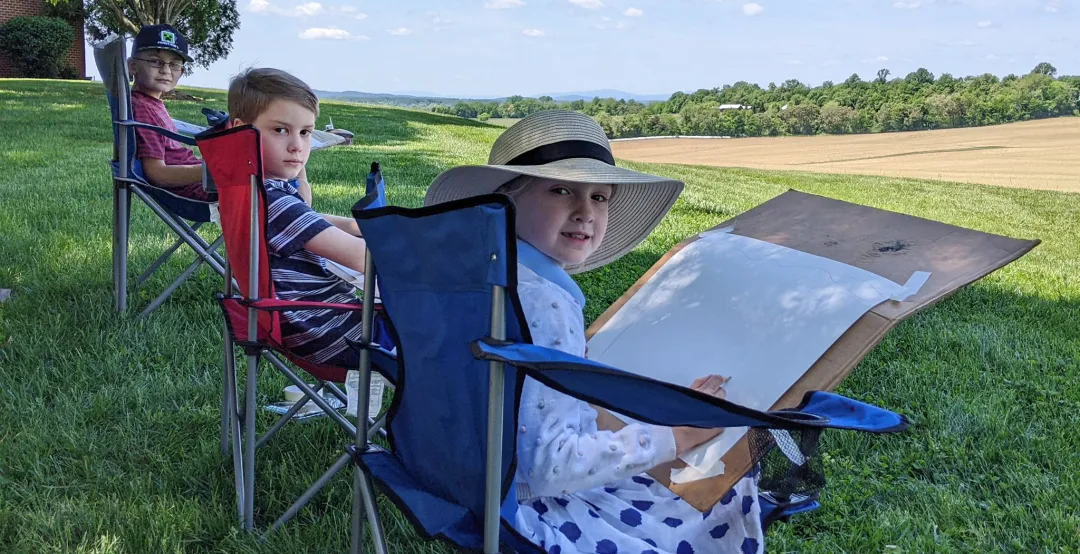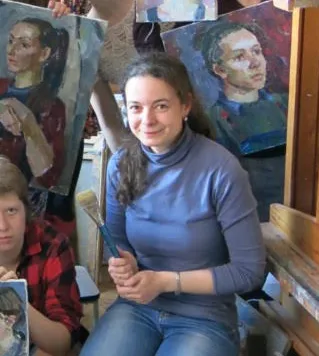131 E. Main St, in downtown Orange VA
Next Set of Classes: Jan 13 - Feb 21. Registration is open.
Tuesdays 2.30 - 4.30 pm
Tuesdays 5 - 7 pm
Saturdays 2 - 4 pm
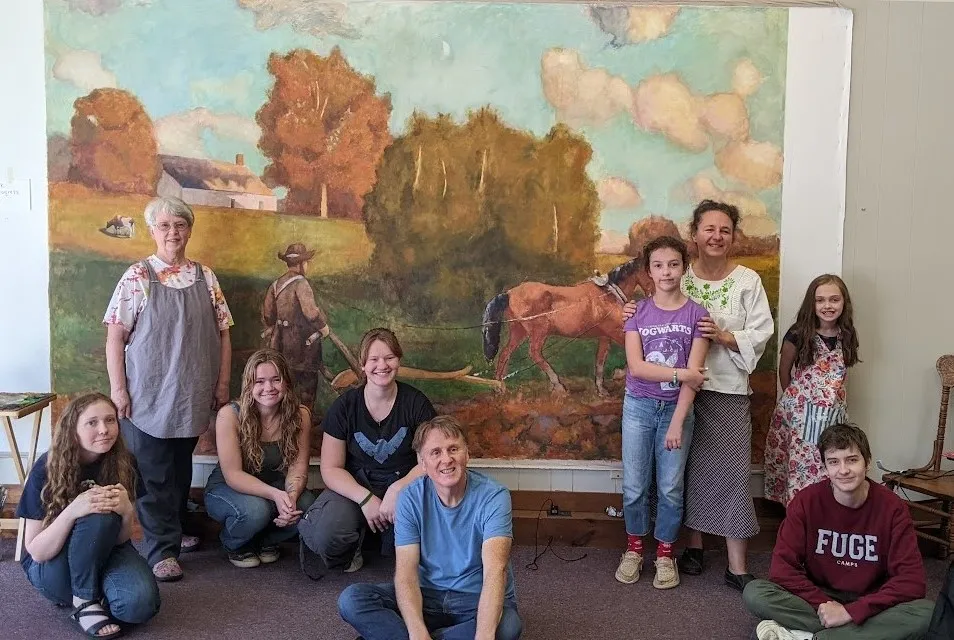
Our Atelier Approach
Blue Ridge Studio fits into the well-known system of classical atelier schools. In an atelier, a student learns a particular art or craft studying with a master teacher. Such a system, while common through the ages was somewhat forgotten in the 20/21 centuries but revived recently. Such ateliers are now extremely popular in the US and Europe. As art universities and colleges in the US and Europe went into conceptual art without much consideration to the craft of it, the classical ateliers have come back to offer such badly needed skills.
Therefore, at Blue Ridge Studio, we do not list classes by mediums (oils or watercolors) or genre (landscape/portrait/still life, etc). We do it all, but in a systematic progression. We start with everyone from drawing and move in general progression from simple to complex, from still life and landscape to the human form. This is how artists have been taught for centuries and this system produced both classical and modern masters. You learn to walk before you can run. You can break all the rules, but, first, you have to learn them.
As professional artists, we should know all mediums to some extent. Therefore, we let you try all of them and then focus on the ones that are more fitting to your temperament. Degas was a great oil painter but he also worked a lot in pastels and his pastel work is just as famous as his oils.
Most important is for a student to master the fundamental art concepts that apply to any medium, and are best learned first from pencil sketching. From our decades of experience, we find that almost all students (many with advanced art degrees from art colleges) lack in classical drawing skills (observational, not to be confused with copying from photos and references).
So, in practical terms, say, we have a group of 6-8 students. In that group we might have some who have been with us for a while, others just starting. Those who started earlier and have done a sufficient amount of drawing would be working in color and sometimes go back to pencils. New students would usually start with drawing.
Subject matter also varies in terms of difficulty. Beginners work from simple still life setups utilizing geometric shapes and everyday objects, both man-made and organic (fruit and flowers for example). In conjunction, students may copy from the Old Masters, such as Van Gogh, Rembrandt, Vermeer, etc. Copying the world masterpieces trains the eye, and helps to understand the form, design, and color harmony. Once you learn to understand the laws of classical arts, you can break them but in a conscious way. Next step is the human form and working from classical sculptures, heads, busts, and anatomical pieces. Ultimately students work on portraits, self-portraits, and figurative pieces.
Landscape on location or plein air painting is also part of our curriculum. Landscape painting is a great genre on its own, but it also serves as a vital exercise to an artist. Working in nature mobilizes all our senses and teaches us to make decisions fast as the light changes and what we see changes with it.
Blue Ridge classes are structured as private lessons in a group setting. Each student is working on his or her assignment based on his or her level and interest. Advanced students with a good proficiency in drawing may move quickly to painting and more complicated genres (portrait and figure). That is why our groups are limited to 8-10 students and we prepare for each student in advance.
Photos below show a general progression of one student (in this case a 14-year-old Charlotte) made in just a few months of studying at Blue Ridge Studio.
Student Progress
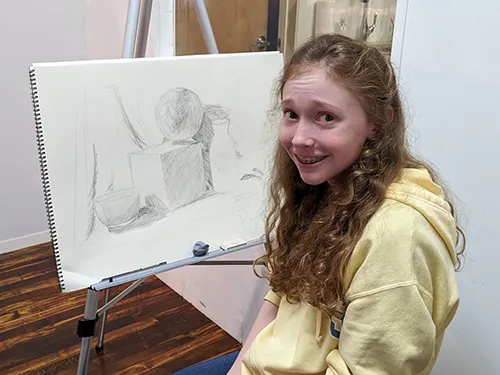
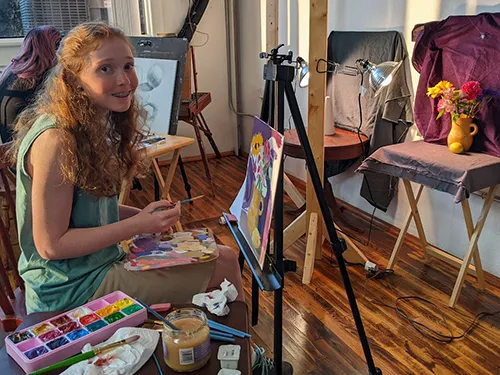
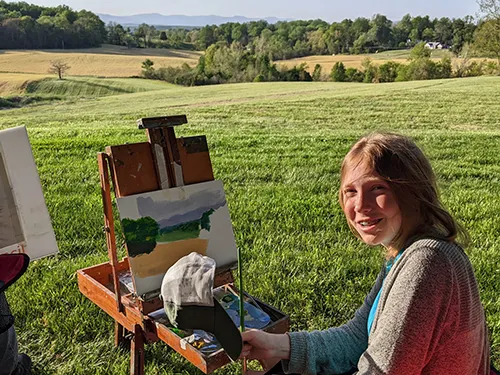
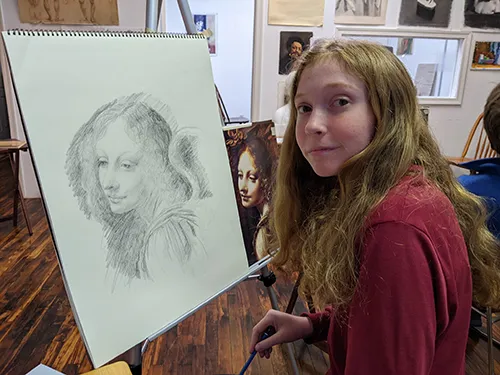
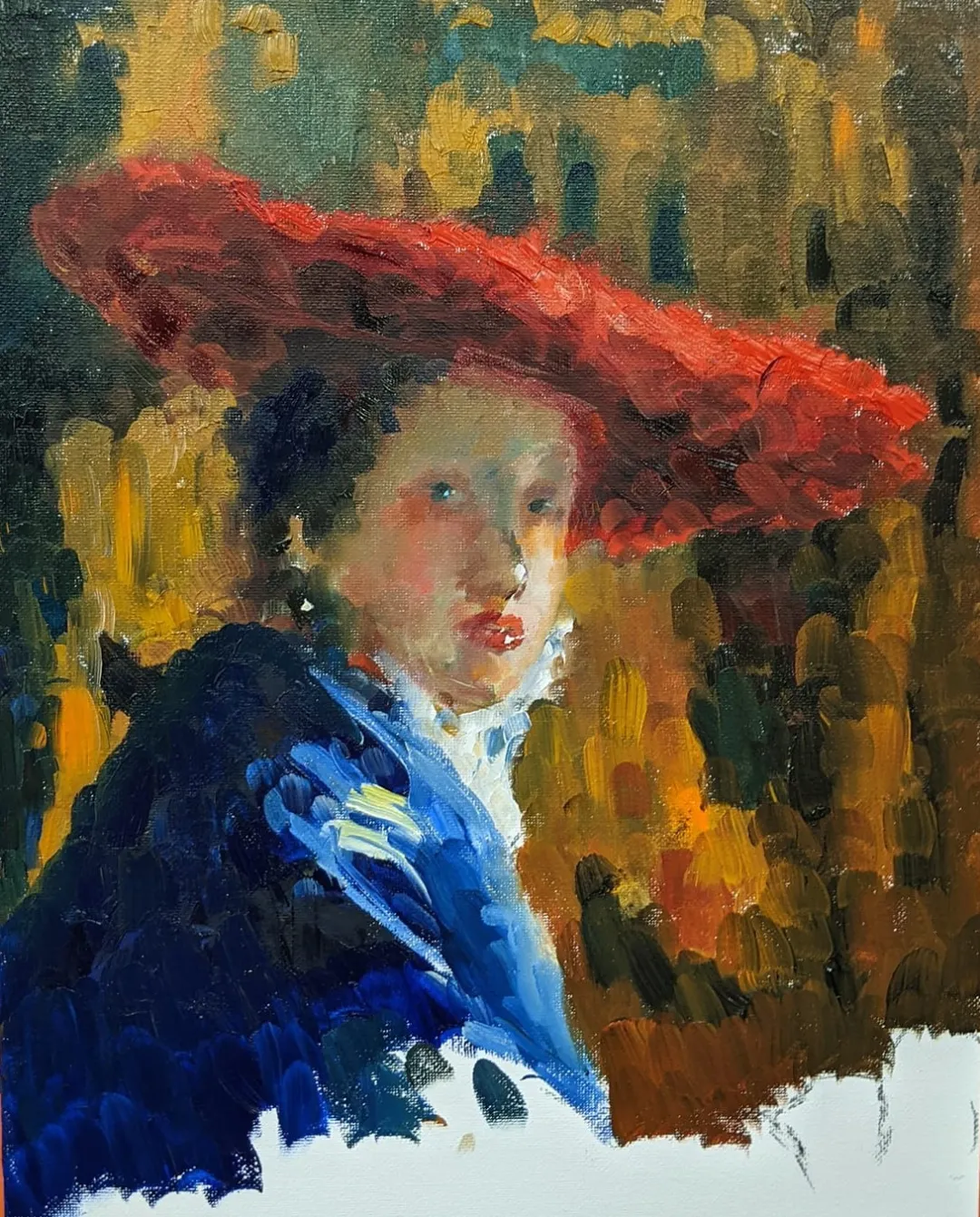
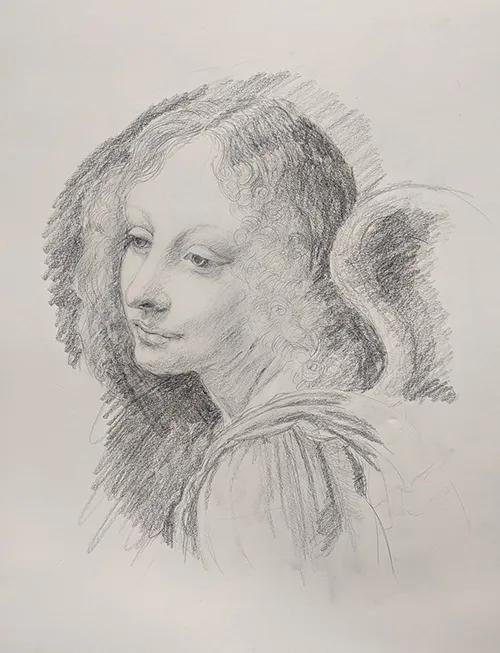
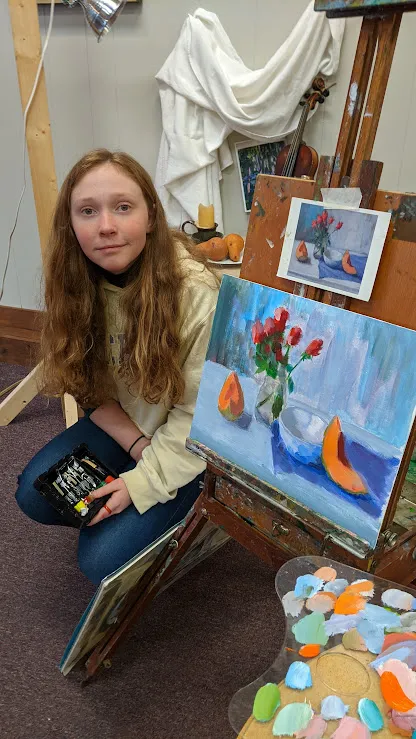
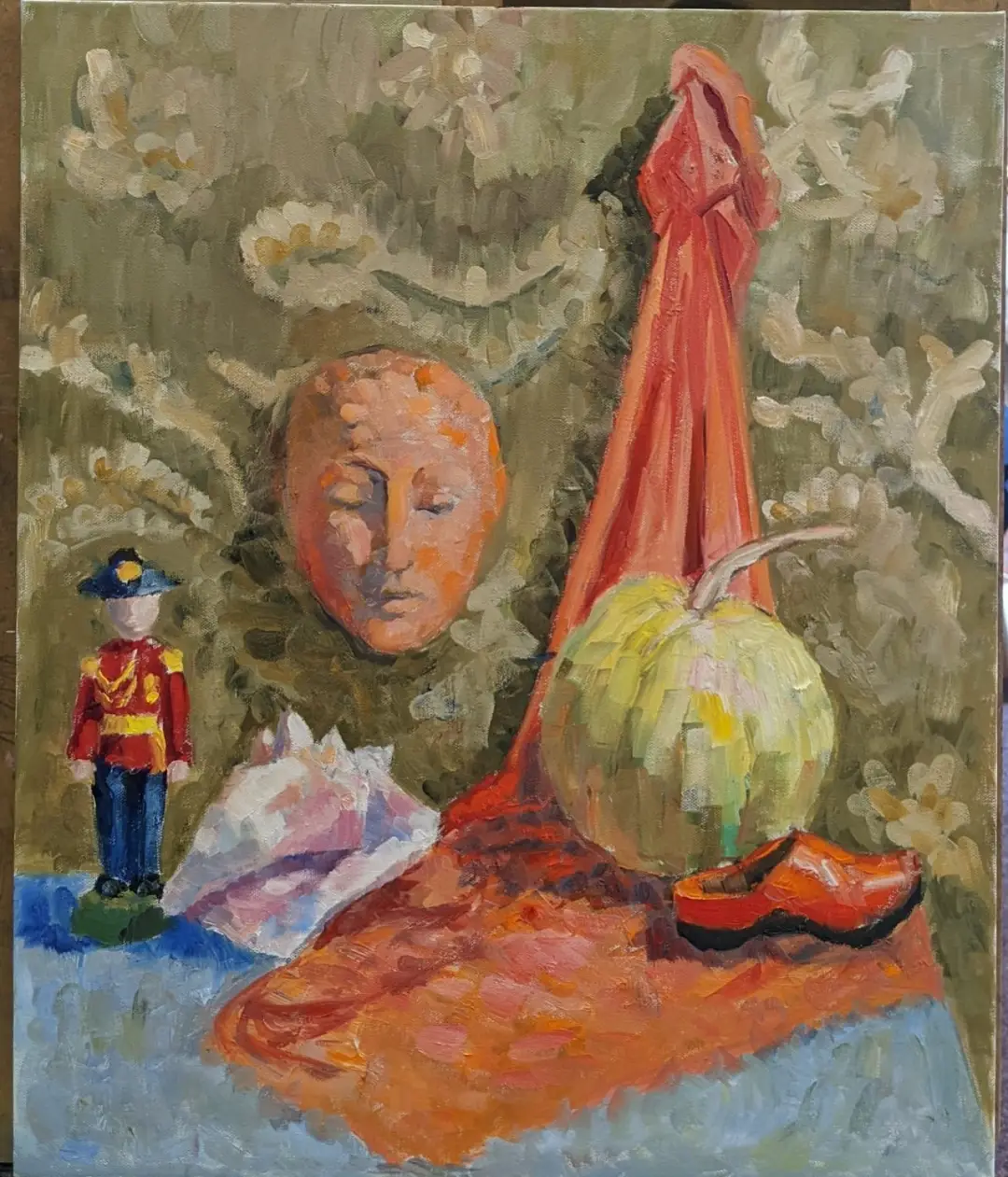
Our Atelier Approach for Children
Our atelier approach, while similar in spirit to that for adults and teens is somewhat different. Children go straight to color and composition. Assignments for young children are based on creative themes. For example, we can ask them to paint Springtime in my Town by setting up a still life with various spring flowers and allowing them to make a scene using elements from observation and imagination. We introduce perspective, proportions, color mixing etc but within a highly creative and imaginative process. With young children we work mostly in pastels for color, but ask them to first draw their overall design in pencil. Acrylics and watercolors may also be used. Themes may include Seasons, Animals, My Room, My Town, My Garden, My family and My Self Portrait.
